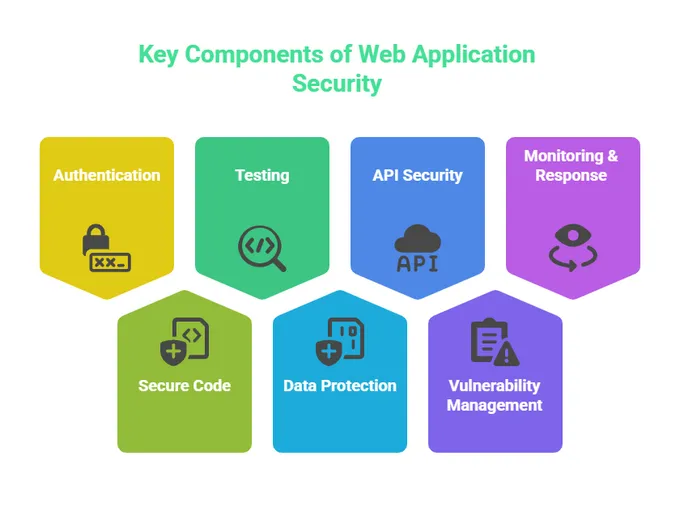Let’s be honest—web development isn’t just about making things look good anymore. Sure, a sleek interface is nice, but in today’s world, security is king. One tiny vulnerability, and your “cool new app” could become tomorrow’s headline about a data breach. So yeah, we need to talk about secure web development—but don’t worry, I’m not going to bore you with a wall of technical jargon. We’ll keep it practical and a little bit conversational.
1. Start with the Basics, But Don’t Stop There
Here’s the thing: most developers know the basic security rules—use HTTPS, sanitize inputs, and hash passwords. But modern apps demand more than that. It’s like locking your front door but leaving the back window wide open. Sure, your password hashing might be solid, but what about session management, CSRF tokens, or JWT expiration times? Missing these details is where trouble starts.
And yes, even seasoned developers slip up here. I’ve personally seen apps where everything seemed secure, but a single overlooked API endpoint exposed sensitive data. Ouch.
2. Embrace Modern Authentication Techniques
Passwords alone aren’t enough anymore. Two-factor authentication (2FA) should be standard. Not optional. And let’s talk about passwordless login. Yep, those magic links you get in your email or push-based authentication apps aren’t just trendy—they actually reduce attack vectors significantly.
JWTs (JSON Web Tokens) are great for session management, but they come with their own pitfalls. Short expiration times and proper storage are critical. Store them in memory, not local storage, if you can. It’s like keeping a spare key in your wallet—sure, convenient, but not smart.
3. Sanitize Everything
This one’s old news, but it can’t be stressed enough. SQL injection, XSS, command injection—they’re still happening in 2025. Modern frameworks make it easier to avoid these issues, but don’t assume you’re safe just because you’re using React, Django, or Node. Always validate and sanitize both server-side and client-side.
Pro tip: Use libraries that are battle-tested for input validation. Rolling your own? Tempting, but risky. It’s like trying to bake your own bread when you’ve never used yeast—you might get it right, but chances are you won’t.
4. Secure APIs Like Your Life Depends On It
APIs are the backbone of modern applications. But every API is a potential attack vector. Rate limiting, authentication, logging, and strict input validation aren’t optional—they’re mandatory.
Here’s a quick mental model: think of your API as a VIP club. Only the right people get in. If someone sneaks in without permission, it can ruin the whole party. And yes, “logging everything” might sound overkill, but when something goes wrong, you’ll thank yourself.
Read More: How to Optimize Web Application Performance

5. Adopt a Security-First Mindset
This is more philosophy than code, but it matters. Security isn’t a feature—it’s a mindset. Treat every new feature like a possible entry point for an attacker. Ask yourself: “If I were trying to hack this, how would I do it?”
It’s not paranoia—it’s good practice. And here’s something to think about: automated security scans are helpful, but nothing replaces manual review and thinking like a hacker. A few hours of careful inspection can save you months of headache later.
6. Keep Dependencies in Check
We love frameworks and libraries—they save time, reduce boilerplate, and make life easier. But each dependency is a possible vulnerability. A single outdated NPM package can open a door to attackers.
Here’s a trick: use automated tools to monitor vulnerabilities, but also audit your dependencies manually. Sounds tedious, but it’s like checking your car before a road trip. Skip it, and you might end up stranded—or worse.
7. Don’t Forget Logging and Monitoring
Even the most secure app can be attacked. That’s just reality. So, have proper logging and monitoring in place. Detect anomalies, unusual traffic patterns, failed login attempts, and unauthorized access. It’s not just about reacting—it’s about noticing things before they blow up.
Think of it like having a security camera in your digital office. You hope you never need it, but when you do, it’s a lifesaver.
Wrapping Up
Modern web development isn’t just about frameworks, libraries, or shiny interfaces. It’s about building apps that people can trust. Security isn’t something you tack on at the end—it’s woven into every line of code, every API call, and every user interaction.
Let’s be real: it can feel overwhelming. But take it one step at a time. Harden your auth, sanitize inputs, watch your dependencies, monitor your traffic—and you’re already leagues ahead of most developers.
Here’s the deal: the web will never be 100% safe. There will always be new exploits, new threats, new challenges. But if you adopt a security-first mindset and keep learning, you’ll minimize risks—and maybe even sleep a little better at night.
After all, secure web development isn’t just coding—it’s caring about the people who use your app. And that’s worth every extra minute of effort.

